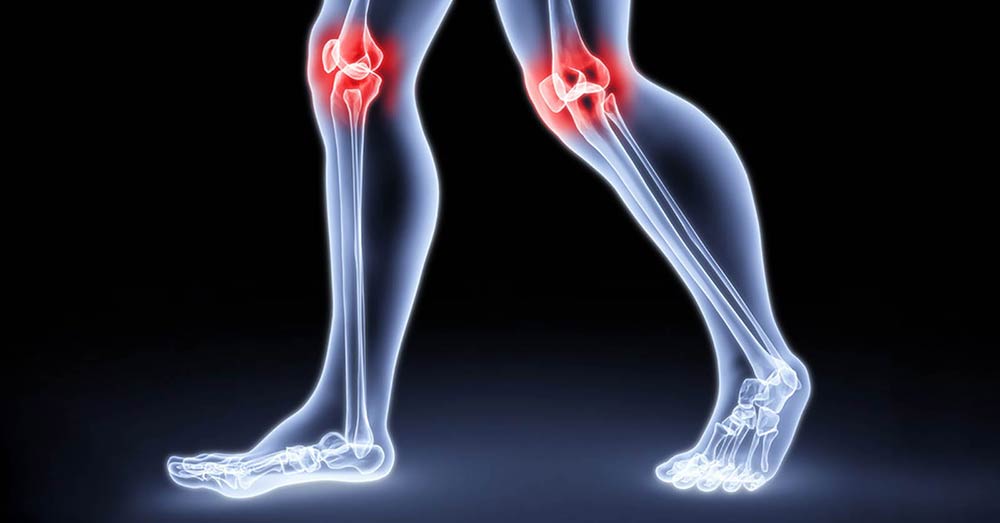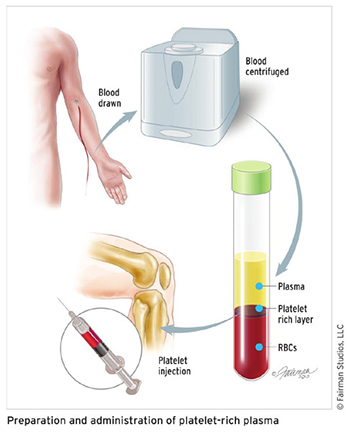Contact us today for a consultation with one of our physicians.

Platelet-Rich Plasma (PRP) Injections are now offered at Soma orthopedic associates in Beverly Hills, CA, and it’s the newest treatment that helps manage a variety of orthopedic conditions. This new PRP treatment is one of the most successful therapies in relieving pain, and speeding up the healing process.
Platelet-Rich Plasma Therapy (PRP) is a ground breaking non-operative treatment that relieves pain by naturally promoting long lasting healing of musculoskeletal conditions. Platelets are small cells found in a persons blood that help form clots to stop bleeding. The body’s first response to tissue injury is to deliver platelets to the area. Platelet Rich Plasma is derived from the person’s blood, which contains many different substances, including the liquid component called plasma. The Platelet-Rich Plasma (PRP) is plasma that contains about 5 to 10 times the normal number. Platelets contain hundreds of proteins called growth factors which are very important in the healing of injuries.
Platelet-Rich Plasma (PRP) has been used since the early 1990s, in plastic surgery. With strict aseptic technique, PRP injections are prepared from the patient’s own blood. These tubes are centrifuged, which is a tool that separates the blood into its many components, Platelet rich plasma can then be collected and treated before it is delivered in to the injured bone or soft tissue, such as a tendon or ligament. When injected, it can help in the body’s natural healing of injuries. PRP has been used in surgery of rotator cuffs, Achilles tendon repairs, injured tendons, spinal ligaments, facet joints, and intervertebral discs, when all other treatments have failed. PRP has also been used in treatment of non-healing or slow healing bones. The goal of PRP is not only to relieve the symptoms but to create healing, and in some cases, PRP can reduce the need for medication and/or surgery.

Platelet Rich Plasma (PRP) treatment has become very popular and recently featured in the news for the rising popularity of the treatment of athletic injuries among professional athletes; from many famous Basketball players, NFL players and other elite athletes from other sports in helping them in their healing process. Some athletes have credited PRP in being able to return more quickly to competition and allowing them to return back to regular activities and competition with minimal to no pain. PRP has shown promising potential for many conditions such as tendonitis, arthritis, and ligament sprains and tears.
PRP has been used to treat chronic and acute injuries as well as degenerative joint changes. It can also be used during surgery to jump-start the healing process following the surgical procedure. Some of the most common applications of PRP include treatment of:
The Platelet Rich Plasma Therapy procedure is conveniently done at our facility. A small amount of blood is drawn from the patient, and placed into a centrifuge, where it is separated. Once separated, concentrated platelet rich plasma (PRP) is ready to be used in the treatment process, and given to patients through a simple, painless injection. The injured part of the body is anesthetized with a local anesthetic and the platelet-rich portion is injected back into the injured ligament, tendon, joint, muscle, or disc that has been determined to be a source of pain and or non-healing. Your doctor may use ultrasound or an X-ray as a guide to placing the injection. The entire process of drawing blood to solution preparation only takes approximately 20-30 minutes.
PRP injection done on the spine, x-ray (i.e. fluoroscopy) guidance is used to assure safe and proper placement of PRP at the affected site. Ultrasound-guidance is used to inject PRP into the appropriate tendon, ligament or joint that is being targeted. A physician may recommend a single injection or a series of injections depending on the injury being treated and a patient’s response to the therapy. Patients typically experience significant reduction in pain after the first or second injection. PRP injections are not painful; however the discomfort level depends on the part of the body being treated. Once the therapy process has been completed, it may take a couple weeks before the person notices an improvement in the affected area. There is sometimes a small amount of pain after the procedure; however this does not last more than a few days and can be minimized with over the counter Tylenol. Following the procedure, you can resume your daily routine activities but avoid strenuous activities such as heavy exercise or lifting.
The side effects of PRP injections are low, it is a safe treatment option with no risk of allergic reaction because the blood that us utilized is the patients own blood. As with any injection, there is a small risk of injury to any structure as well as a very small risk of infection. Anytime a needle is placed in the body, there is a risk of infection, bleeding, and nerve damage. These risks do not happen often, and are very rare. If you are unsure of the risks of your specific condition, consult your physician.
For more information about Platelet-Rich Plasma (PRP) Injections in the Los Angeles and Beverly Hills, CA area, and how this therapy can help you manage your orthopedic condition, please contact us at 855-SOMA-844 (855-766-2844).